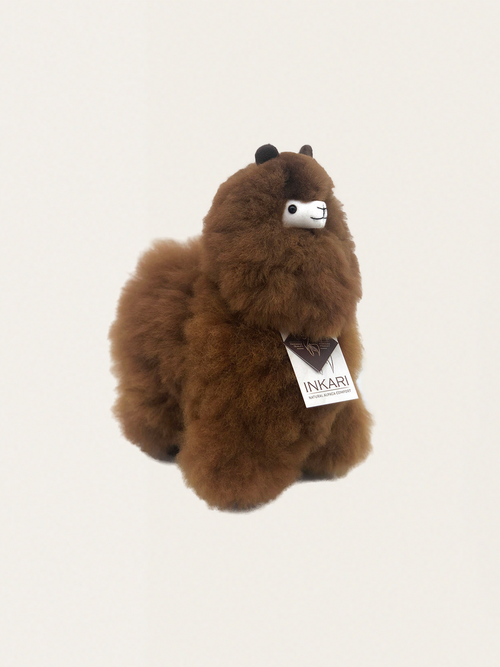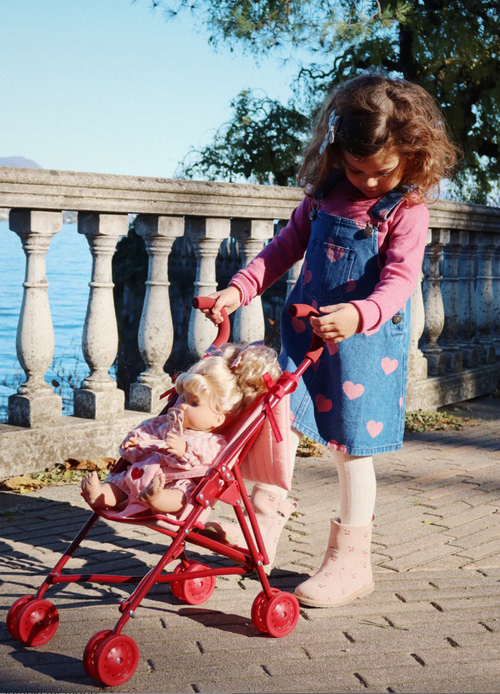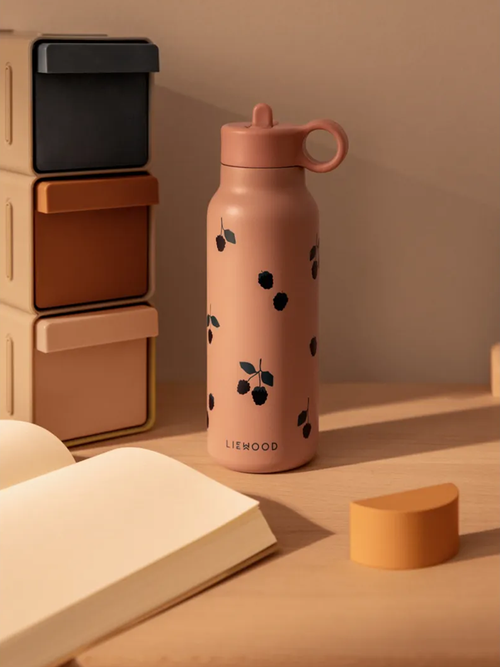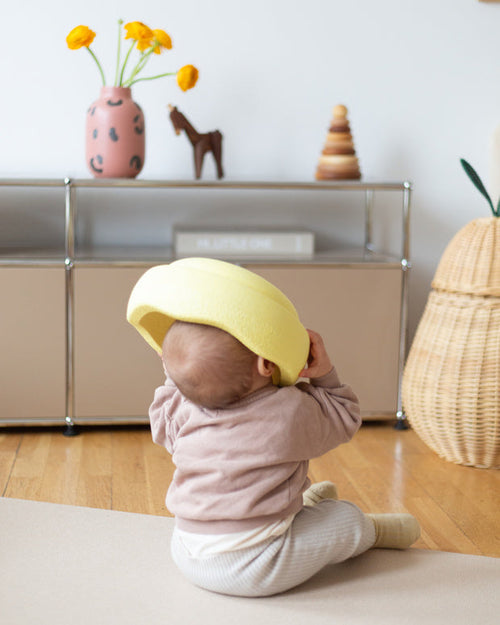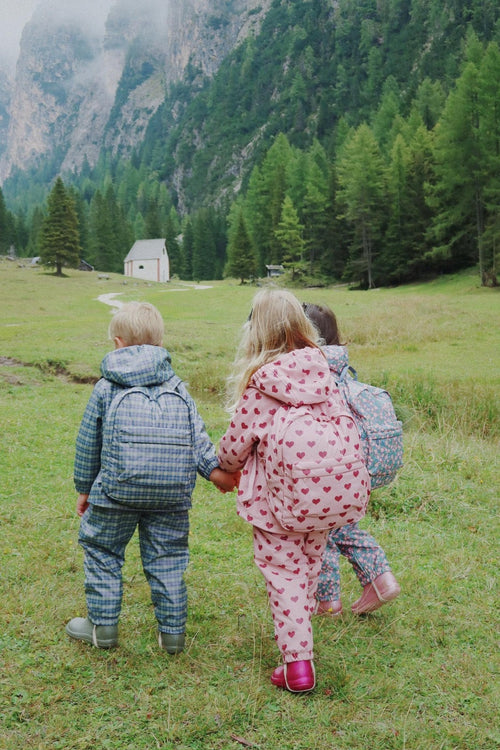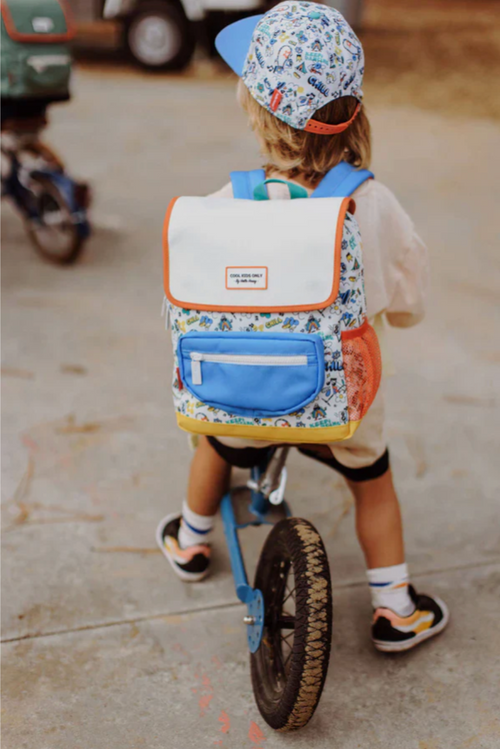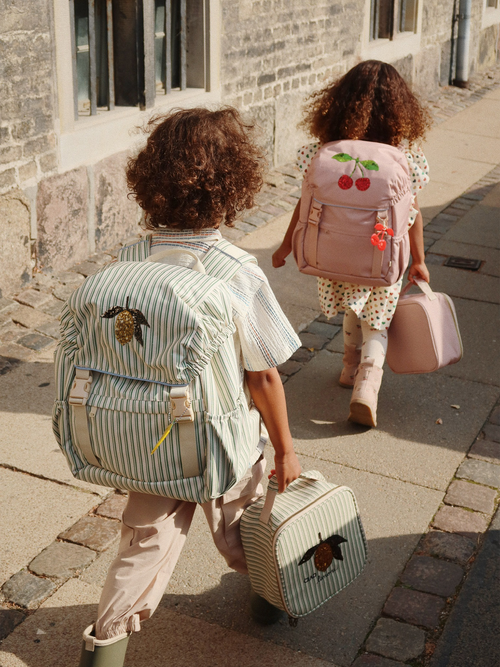Winter is a magical time – the world outside is covered in snow, the air is crisp, and we eagerly enjoy the delights of winter walks. However, many new parents wonder: how to dress a baby in winter to ensure comfort and safety in low temperatures? Properly preparing your little one for winter walks is crucial to protect them from the cold while ensuring comfort. In our article, you'll find practical tips on how to dress a baby for winter and what to look out for during winter walks.
How to Dress a Baby in Winter – The Rule of Layers
One of the key principles of dressing a baby in winter is the layering method, also known as the "onion" principle. This means that the baby should be dressed in several layers of clothing that provide thermal insulation and allow for easy adjustment to changing weather conditions. This method ensures warmth while also allowing for easy adjustment to the conditions – if it gets too warm in the stroller, you can easily remove one layer.
It's best to start with the first layer , which is closest to the baby's skin. Long-sleeved bodysuits and sleepsuits made of cotton are best, as they allow the skin to breathe while retaining warmth.
The second layer should provide thermal insulation – you can choose a fleece jumpsuit or warmer pants and a sweatshirt. A material like fleece is lightweight but also excellent at retaining heat.
The third layer provides protection against cold, wind, and snow. A winter snowsuit is perfect for this purpose, as it's waterproof and windproof. Our store offers a wide selection of winter snowsuits suitable for winter walks with a baby. The snowsuits available in our store also feature special hoods that further protect the little one's head from the cold.
Choosing a Winter Suit – What's Important?
A snowsuit is the most important piece of a baby's wardrobe for winter walks. To ensure it functions properly, it's worth considering a few key aspects:
- Windproof and waterproof – A good snowsuit should be windproof and moisture-resistant. This will protect your child from hypothermia if exposed to snow or rain.
- Hood and cuffs – A jumpsuit with a hood will protect your baby’s head, and cuffs around the wrists and ankles will prevent cold air from getting under the clothes.
- Front Zipper – Convenience when dressing is key, especially when your baby is active. A front zippered jumpsuit makes it easier to put on and take off, which is especially important when visiting a warmer room where you need to remove your outer layer.
A well-fitting snowsuit should allow your little one freedom of movement while also fitting snugly to prevent cold air from seeping in. It's sometimes worth investing in a model with detachable booties and mittens, which makes it even easier to adapt to changing weather conditions.
How to Dress a Baby in a Stroller?
When strolling in winter, in addition to appropriate clothing, it's worth remembering other accessories that will help keep your little one warm. A stroller footmuff is the perfect solution, providing additional warmth and protection from cold winds. The footmuffs available in our store have thermal insulation properties and are ideal for even the most demanding conditions.
Another important item is a blanket . You can place it on top of your baby or under them if the temperature is particularly low. It's also worth providing appropriate foot coverings – babies' feet get cold quickly, so an extra layer of thick socks is essential.
Another important aspect of dressing a baby in a stroller in winter is the use of rain and wind covers . These will effectively protect your little one from gusts of wind, snow, or rain. A suitable cover can also create a cozy microclimate inside the stroller, retaining warmth and ensuring a comfortable sleep for your child outdoors.
Headgear and Handwear – Key Elements of a Winter Wardrobe
A hat is one of the most important elements when dressing a baby in winter. Most heat escapes through the head, so a well-fitting hat is essential. A hat should fit snugly , cover the ears, and be made of a material that provides warmth while allowing the skin to breathe. In our store, you'll find a variety of hats perfect for winter conditions.
Don't forget about your baby's hands either – gloves should be warm and fit snugly around the wrists to prevent cold air from getting in. In very cold temperatures, it's worth choosing mittens, which retain heat better than five-fingered ones. For older babies who are more active, consider gloves with longer cuffs that can be tucked under the sleeve of a snowsuit – this prevents them from slipping down and allowing cold air to get in.
How to Check if a Baby is Dressed Warmly Enough?
Parents often worry about whether their child is dressed warmly enough, especially in winter. It's important not to rely solely on the temperature of their hands, as babies have different thermoregulation systems than adults. The best way to check a child's temperature is to feel the back of their neck. If the back of their neck is warm and dry, it means the child is properly dressed. If the back of their neck is cold, it means the child needs an extra layer, and if they're sweaty, you can remove a layer.
Remember, your baby shouldn't be overheated. Overly warm clothing can lead to excessive sweating, which, combined with cold air, can cause hypothermia. It's important to maintain a proper balance and respond to your baby's needs.
It's also worth observing your child's behavior during walks. If your little one is calm, it means they're comfortable. However, restlessness, frequent crying, or redness may indicate that their body temperature is too high or too low.
Walking with a Baby in Winter – Additional Tips
During winter walks, it's worth remembering a few additional aspects that will help keep your little one comfortable. First, the length of the walk – it's best to avoid very long walks in extremely low temperatures. If temperatures drop below -10 degrees Celsius, it's best to limit time spent outdoors to a minimum. Longer walks can be beneficial on warmer winter days, when temperatures hover around freezing.
It's also worth remembering to protect your baby's delicate skin from cold air. Before going for a walk, apply a special protective face cream for babies . Toddlers' skin is very sensitive, and cold winds can quickly dry it out and irritate it. In our store, you'll find protective cosmetics designed for babies, perfect for winter.
Another aspect worth considering is monitoring your little one's mood . If your baby is fussy, it's worth stopping the walk and checking if they're too cold or too warm. Remember that babies communicate their needs primarily through crying, so it's important to respond to such signals.
Winter Walk and Baby Sleep
Winter walks can be a great opportunity for a nap outdoors. Many parents notice that their little ones sleep better in the fresh, crisp air. However, it's important to provide the child with the right conditions. The stroller should be properly prepared – rain covers can prevent cold winds from entering the carrycot, while a sleeping bag and an extra blanket will provide adequate thermal insulation.
Sometimes it's also worth using special stroller inserts that further insulate your baby from the cold stroller floor. These inserts, available in our store, help maintain thermal comfort and provide better sleeping conditions, while also being made of materials safe for your baby's sensitive skin.
It's also worth paying attention to proper ventilation in the stroller. Covering your baby too tightly can lead to moisture accumulation, which reduces comfort. It's important to ensure adequate airflow while also protecting your little one from the cold.
How to Keep Your Baby Comfortable During Winter Walks
To ensure maximum comfort for your baby during winter walks, it's also worth considering yourself. Parental comfort translates into peace of mind for your child. Warm gloves for parents, a stroller handle cover, and comfortable, moisture-wicking shoes all contribute to the quality of your walk. In our store, you'll find accessories that will make walks more enjoyable not only for the child but also for the parent.
Remember to regularly check your child's clothing during walks. It's worth stopping occasionally to assess whether your little one is overheating or too cold. Proper preparation for a walk is key to your child's health and well-being.
Products from Our Store That Will Help You with Winter Walks
Our store offers a wide range of products to help ensure your little one's comfort and safety during the winter. Here are a few suggestions:
- Winter overalls – A variety of overalls made of windproof and waterproof materials, perfect for winter walks.
- Stroller sleeping bags – Thermally insulated sleeping bags that provide additional warmth and protection against the cold.
- Stroller Blankets and Liners – Warm blankets and insulating inserts that keep your little one warm and comfortable while napping on a walk.
- Hats and Gloves – A wide selection of hats and gloves that protect your child's delicate body from the cold.
- Protective cosmetics – Protective creams dedicated to babies, which protect the skin against cold wind and low temperatures.
Summary
Dressing a baby in winter may seem complicated, but by following a few basic rules you can ensure

